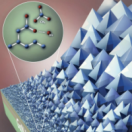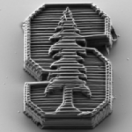SystemX Alliance News
Wed, 02/01/2023
Stanford’s Biomimetics and Dexterous Manipulation Lab has developed a dry adhesive tape inspired by gecko feet. The adhesive was recently featured in an informational video on the popular YouTube channel Veritasium.
Wed, 02/01/2023
In the race for fast-charging, energy-dense lithium metal batteries, scientists discovered why the promising solid electrolyte version has not performed as hoped.
Fri, 01/27/2023
An expert in autonomous vehicles explains how engineers are ensuring tomorrow’s pilotless planes, trains and automobiles will be safer than today’s human-controlled counterparts.
Fri, 01/20/2023
New research from a Stanford lab claims to show that scientists can see many health markers from a single drop of blood, similar to what Elizabeth Holmes claimed Theranos could do.
Thu, 12/01/2022
Using well-known materials and manufacturing processes, researchers have built an effective, passive, ultrathin laser isolator that opens new research avenues in photonics.
Mon, 11/28/2022
Gallium nitride transistors have struggled to handle the thermal load of high-frequency electronics
Thu, 11/17/2022
Engineers have designed a new material for nanoscale 3D printing that is able to absorb twice as much energy and could be used to create better lightweight protective lattices.
Tue, 11/08/2022
His citation reads "For pioneering contributions to computational optics and display systems engineering."
Mon, 11/07/2022
The secret to long life for rechargeable batteries may lie in an embrace of difference. New modeling of how lithium-ion cells in a pack degrade show a way to tailor charging to each cell’s capacity so EV batteries can handle more charge cycles and stave o
Wed, 10/19/2022
The new APS Fellows are recognized for their work in fluid dynamics and industrial and applied physics.












